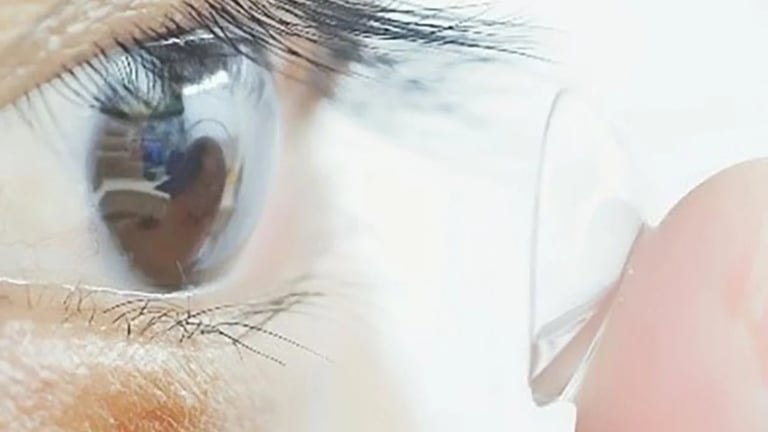items chosen one by one so you have the best option and save money on amazon (Links in articles)
China’s Infrared Contact Lenses Could Change How We See the World
Imagine being able to see in the dark, detect body heat, or view hidden patterns invisible to the human eye — with nothing but a contact lens. This is no longer science fiction. Chinese scientists are pioneering infrared technology so advanced that they’ve developed contact lenses capable of infrared vision. Let’s explore how this breakthrough works, what it means, and why it could reshape the future of human perception.
5/24/20252 min leer


What Is Infrared Vision — and Why Does It Matter?
Infrared (IR) light is part of the electromagnetic spectrum, just beyond visible red light. Humans can’t see it, but we can feel it — it’s the heat emitted by objects.
Infrared imaging is already used in:
Night vision goggles
Thermal cameras in military and rescue ops
Medical diagnostics
Industrial inspections
Astronomy and surveillance
But what if you could see it directly — just like cats, snakes, or high-end thermal cameras?
The Breakthrough: Infrared-Enabled Contact Lenses
Researchers in China, especially at top-tier institutions like the University of Science and Technology of China (USTC), have developed a flexible, ultra-thin infrared sensor that can be embedded into a standard contact lens.
Key highlights:
No need for external power supply
Works with ambient heat or light
Can capture near-infrared (NIR) and short-wave infrared (SWIR) ranges
Made from graphene and other 2D nanomaterials
Compatible with soft lenses worn daily
The tech uses photodetectors that convert infrared light into a visible signal for the human eye — effectively “translating” invisible wavelengths into what we can perceive.
How Does It Work?
The infrared contact lens is constructed from layered nanomaterials like graphene and indium selenide, which are incredibly thin, conductive, and responsive to infrared wavelengths.
Infrared light hits the lens
The sensor absorbs IR photons
These are converted into an electrical signal
The signal stimulates a miniature display (or retinal signal), making it “visible”
This happens in real time, allowing the wearer to see heat signatures, hidden patterns, or objects in total darkness.
Applications: From Battlefield to Healthcare
The implications are massive — both for military and civilian life.
🔥 Military and Law Enforcement
See through smoke or fog
Spot hidden enemies at night
Identify body heat in rescue missions
🧠 Medical Diagnostics
Detect inflammation or tumors via heat patterns
Identify circulatory issues without invasive tools
🔍 Augmented Reality (AR)
Layer real-time heatmaps or diagnostics over the field of view
Enhance driver or pilot vision in low visibility
👁️ Personal Use
Nighttime hiking or camping
Home security
DIY inspections
We’re entering an era where humans can gain predator-like vision — without bulky headsets or glasses.
China’s Growing Role in Human Augmentation
China is rapidly becoming a global leader in next-gen human enhancement technologies. Infrared lenses are just one piece of a bigger picture that includes:
Brain-computer interfaces
Retinal display systems
Smart wearables with AI processing
Biometric and sensor fusion platforms
While the West focuses on VR and AR through headsets like Vision Pro or Meta Quest, China is quietly innovating discreet, integrated human-tech interfaces.
Are There Risks or Ethical Concerns?
Yes — and they’re important.
Privacy: If everyone can see in the dark or detect heat, how do we regulate use?
Surveillance: Could these be used secretly?
Military imbalance: Could mass production of such lenses create a tactical edge?
Biological integration: What are the long-term effects of wearing nanosensors in your eyes?
As with any disruptive tech, the ethical conversation must evolve in parallel with the innovation.
Final Thoughts: A New Way of Seeing Is Coming
Infrared contact lenses could redefine what it means to “see.” No longer limited by the visible spectrum, humans could:
Navigate darkness like it's daylight
Detect heat and motion as a sixth sense
View a world once reserved for machines
🔮 The future of vision is no longer limited to your eyes — it’s being engineered at the nanoscale.
Want more cutting-edge tech news?
Follow luxuahead.com for the latest innovations in AI, augmented reality, smart devices, and futuristic science that could change how we live — and see.